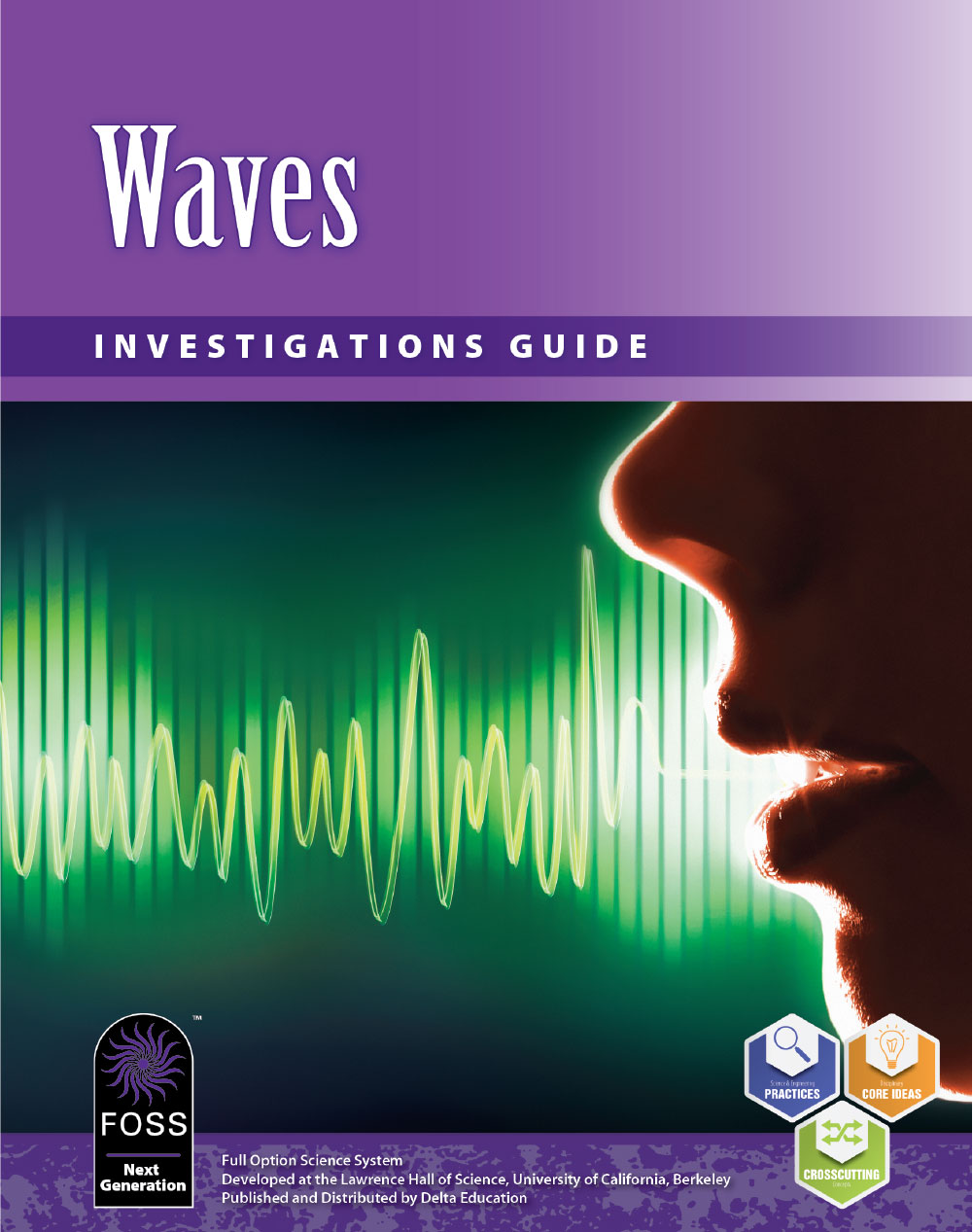FOSS Next Generation Waves
Grades 6-8

The Waves Course proceeds from the most concrete observations, those of physical properties of mechanical waves, to the most abstract concepts, by which students develop a model of electromagnetic waves. They manipulate springs and lasers to determine properties that eventually will be used to explain how their cell phones work. Students leave this course with a greater appreciation and understanding of modern communications technology and a solid foundation for high school and college physics.
Investigation 1: Make Waves
Students monitor their heart rate under different circumstances to think about frequency. They create waves using metal springs. They use these simple waves to explore the fundamental properties of waves: wavelength, frequency, and amplitude.
Investigation 2: Wave Energy
Students learn about wave energy and compare energy in waves with different properties. They then look at an engineering failure and consider the work engineers must do to achieve a successful design. Finally, students use these ideas to develop a chamber that can effectively block sound waves.
Investigation 3: Light Waves
Students use mirrors to explore reflection. Students use spectroscopes to analyze spectra of visible light and learn more about the electromagnetic spectrum. They use filters to change the spectrum of a light source and to learn about color and determine how refraction changes the path of light rays as they travel between media.
Investigation 4: Communication Waves
Students learn how information can be encoded and sent as digital waves to transfer information efficiently. They test properties of fiber optic cables to develop an understanding of how total internal reflection allows data transfer by light. Students learn how data is encoded and sent as modulated waves to a recipient for demodulation.